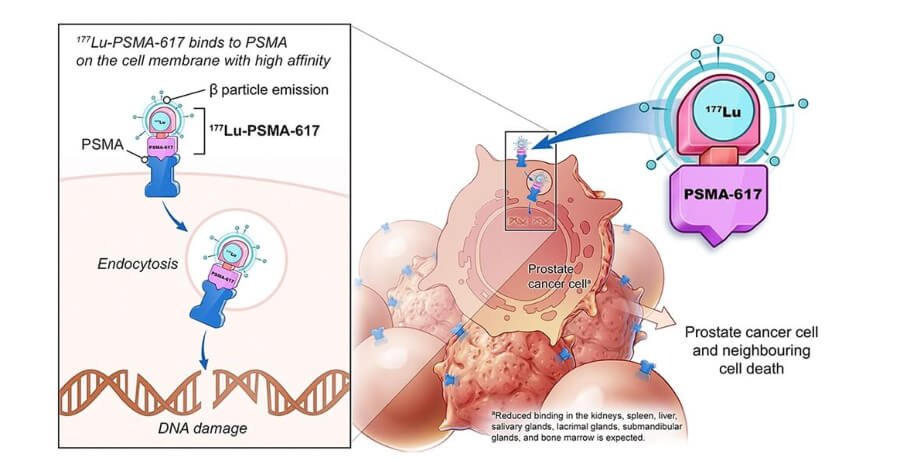Imagine a tiny warrior, armed with radiation that seeks out and destroys cancer cells with pinpoint accuracy. That’s the potential of lutetium 177 (Lu-177), a radioactive isotope making waves in the world of cancer treatment. Let’s delve into what Lu-177 is, how it works its magic, and the exciting possibilities it holds.
Lu-177 isn’t your average radioactive material. It’s a specific isotope of the element lutetium, a metal found in rare earth minerals. But Lu-177 isn’t used for its metallic properties. Instead, it’s prized for its ability to emit beta particles, a type of radiation with a short travel distance. This localized radiation makes Lu-177 a valuable tool in targeted radionuclide therapy (TRT).
Types of Cancer Lu-177 Targets
Currently, Lu-177 shines brightest in treating two specific types of cancer:
Neuroendocrine tumors (NETs): These are slow-growing tumors that can arise in various parts of the body, often in the digestive system or lungs.
Prostate cancer: When prostate cancer becomes advanced and spreads to other parts of the body (metastasizes), Lu-177 offers a new treatment option.
The Benefits of Lu-177 Therapy
While traditional radiation therapy can be effective, it often affects healthy tissues surrounding the tumor. Lu-177’s targeted approach offers several advantages:
Reduced side effects: Since the radiation travels a short distance, it minimizes damage to healthy cells, leading to fewer side effects compared to conventional radiation therapy.
Effective against advanced cancers: For cancers that haven’t responded well to other treatments, Lu-177 can be a viable option to control tumor growth and improve symptoms.
Theranostic potential: Some Lu-177 treatments can also be used for imaging, allowing doctors to see how well the therapy is working.
The Steps Involved in Lu-177 Therapy
Here’s a simplified breakdown of what to expect if you’re undergoing Lu-177 therapy:
Preparation: Doctors will assess your overall health and determine if you’re a good candidate for Lu-177 treatment.
Targeting: Lu-177 is often attached to a molecule that seeks out specific receptors on cancer cells. For instance, in prostate cancer, Lu-177 might be linked to a molecule that binds to a protein called PSMA, which is abundant on prostate cancer cells.
Administration: The Lu-177-linked molecule is then administered intravenously (through a vein).
Monitoring: After the treatment, doctors will monitor your progress through scans and blood tests.
The Future of Lu-177 Therapy
Lu-177 is still a relatively new treatment option, but research is ongoing to explore its potential in treating other types of cancer. Additionally, scientists are developing new ways to deliver Lu-177 more effectively and combine it with other therapies for even better results.
FAQs
Is Lu-177 a cure for cancer?
While Lu-177 can be very effective in controlling tumor growth and improving symptoms, it’s not always a cure. Its effectiveness depends on the type and stage of cancer.
Are there any side effects with Lu-177 therapy?
Possible side effects can include fatigue, low blood cell counts, and nausea. The severity of these side effects can vary depending on the individual and the dosage.
Is Lu-177 covered by insurance?
Insurance coverage for Lu-177 therapy can vary depending on the specific plan and the reason for treatment. It’s best to check with your insurance provider.
Conclusion
Lu-177 represents a promising advancement in targeted cancer therapy. Its ability to deliver a powerful punch directly to cancer cells while minimizing harm to healthy tissues makes it a valuable tool in the fight against this devastating disease. As research continues, Lu-177 has the potential to improve the lives of many cancer patients in the years to come.
